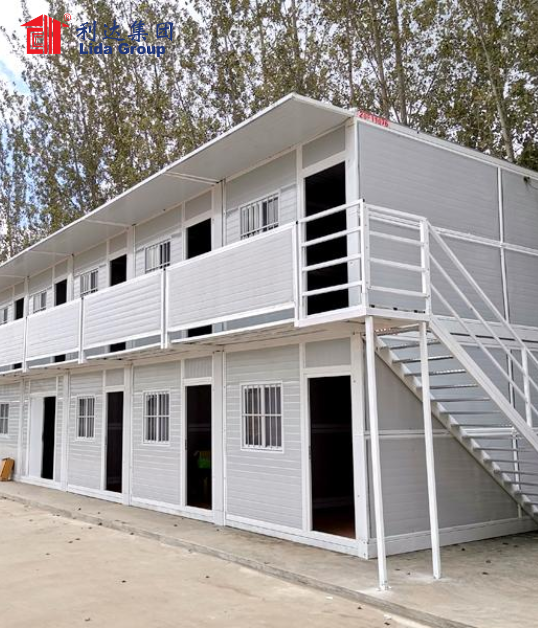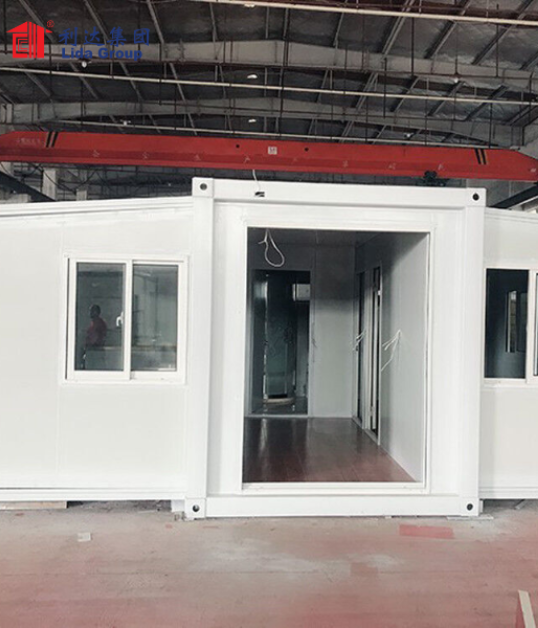Introduction
In the world of construction, innovation plays a crucial role in shaping the future of the industry. Lida Group, a renowned provider of modular construction solutions, has been at the forefront of introducing innovative container building designs. By repurposing shipping containers and combining them with cutting-edge construction techniques, Lida Group has revolutionized the way buildings are designed and constructed. In this article, we will explore the features, benefits, and applications of Lida Group’s container building designs, highlighting their contribution to the field of innovative construction.
The Rise of Container Building Designs
Shipping containers, originally designed for transporting goods across the globe, have found a remarkable second life in the construction industry. The utilization of shipping containers as building modules offers numerous advantages, such as cost-effectiveness, sustainability, and flexibility. Lida Group has harnessed these advantages and pushed the boundaries of container building designs to create structures that are not only functional but also aesthetically appealing and environmentally friendly.
Features of Lida Group’s Container Building Designs
Lida Group’s container building designs incorporate several features that set them apart from traditional construction methods:
- Modular Construction: Container building designs are based on a modular construction approach, where individual containers act as building blocks that can be easily combined and stacked to create larger structures. This modular nature allows for flexibility in design, scalability, and efficient construction processes. It also enables quick assembly and disassembly, making container buildings suitable for temporary or relocatable projects.
- Structural Integrity: Shipping containers are built to withstand the rigors of sea transportation, making them inherently strong and durable. Lida Group’s container building designs capitalize on this structural integrity, providing robust and stable structures that can withstand various environmental conditions, including earthquakes and harsh climates. The inherent strength of containers ensures the safety and longevity of the buildings.
- Customization and Versatility: Container building designs offer a high level of customization and versatility. Containers can be modified and adapted to meet specific design requirements and functional needs. They can be cut, welded, and stacked in various configurations, enabling architects and designers to create unique and innovative structures. The versatility of container building designs allows for the integration of different architectural styles and the incorporation of additional construction materials.
- Sustainable Construction: Lida Group’s container building designs align with sustainable construction practices. By repurposing shipping containers, these designs reduce the demand for new construction materials, minimizing the environmental impact associated with traditional construction methods. Additionally, container buildings can incorporate green technologies such as solar panels, rainwater harvesting systems, and energy-efficient insulation, further enhancing their sustainability and reducing their carbon footprint.
Benefits of Container Building Designs
Lida Group’s container building designs offer several benefits that make them an attractive choice for innovative construction:
- Cost-Effectiveness: Container building designs provide cost-effective construction solutions. The use of repurposed shipping containers significantly reduces material costs compared to traditional building materials. Moreover, the modular construction approach allows for efficient and streamlined construction processes, reducing labor costs and project timelines. The cost-effectiveness of container building designs makes them appealing for various applications, including affordable housing, temporary structures, and commercial projects.
- Speed of Construction: Container building designs offer faster construction times compared to conventional construction methods. Since containers are pre-fabricated off-site, the construction process can proceed concurrently with site preparation, resulting in reduced project timelines. Additionally, the modular nature of container buildings allows for parallel construction activities, further accelerating the overall construction speed. The shorter construction times translate into cost savings and quicker occupancy, making container building designs a favorable option for time-sensitive projects.
- Flexibility and Scalability: Container building designs provide flexibility and scalability in terms of design and functionality. Containers can be easily modified, reconfigured, or expanded to meet changing needs and requirements. This adaptability allows for future expansion or reconfiguration without significant disruption or additional construction costs. The flexibility and scalability of container buildings make them suitable for a wide range of applications, including residential, commercial, and institutional projects.
- Portability and Mobility: One of the unique advantages of container building designs is their portability and mobility. Containers can be transported to different locations, making them ideal for temporary or relocatable projects. This portability allows for the reuse and repurposing of containers, minimizing waste and maximizing resource efficiency. Additionally, container buildings can be easily disassembled and relocated, providing flexibility and adaptability in response to changing needs or site requirements.
- Design Innovation: Container building designs offer endless possibilities for design innovation. The combination of containers with traditional building materials and architectural techniques can result in striking and visually appealing structures. The industrial aesthetic of containers can be integrated with modern design elements to create a unique architectural statement. Container building designs open up new avenues for creativity and imagination, challenging traditional notions of building aesthetics.
Applications of Container Building Designs
Lida Group’s container building designs have found applications in various sectors and contexts:
- Residential Structures: Container building designs can be used to create innovative and sustainable residential structures, including single-familyhomes, multi-family housing, and affordable housing projects. The flexibility of container buildings allows for customizable layouts and designs that cater to different residential needs and preferences.
- Commercial and Retail Spaces: Container building designs are well-suited for commercial and retail spaces, such as pop-up stores, cafes, restaurants, and offices. The unique and eye-catching aesthetics of container structures can attract customers and create memorable experiences. Container buildings also offer the advantage of mobility, allowing businesses to easily relocate or expand their operations.
- Educational and Institutional Facilities: Container building designs can be utilized to construct educational facilities, such as classrooms, libraries, and training centers. The speed of construction and flexibility of container buildings make them suitable for meeting temporary or urgent educational needs. Additionally, container structures can serve as community centers, healthcare clinics, or disaster relief facilities, providing versatile solutions for institutional requirements.
- Hospitality and Tourism: Container building designs have gained popularity in the hospitality and tourism industry. Container hotels, eco-resorts, and glamping sites offer unique and eco-friendly accommodation options for travelers seeking immersive and sustainable experiences. The mobility of container buildings also allows for the creation of temporary or seasonal hospitality venues, such as beachfront bars or event spaces.
- Urban Development and Redevelopment: Container building designs can contribute to urban development and redevelopment projects. Containers can be utilized to revitalize underutilized urban spaces, such as vacant lots or brownfield sites. Container structures can serve as temporary installations or transitional spaces, providing opportunities for cultural events, art exhibitions, or community activities. Their portability also allows for the temporary activation of derelict areas before permanent development takes place.
Conclusion
Lida Group’s container building designs represent a significant innovation in the construction industry. By repurposing shipping containers and combining them with creative design solutions, Lida Group has transformed these humble structures into versatile, sustainable, and aesthetically appealing buildings. The modular nature, structural integrity, cost-effectiveness, and design flexibility of container buildings make them an attractive choice for various applications, ranging from residential and commercial projects to institutional and hospitality structures. As the construction industry continues to evolve, container building designs are poised to play a pivotal role in shaping the future of innovative construction. Through their commitment to innovation and sustainability, Lida Group has demonstrated that container building designs offer endless possibilities for creating functional, unique, and environmentally conscious buildings.
Post time: Apr-26-2024


